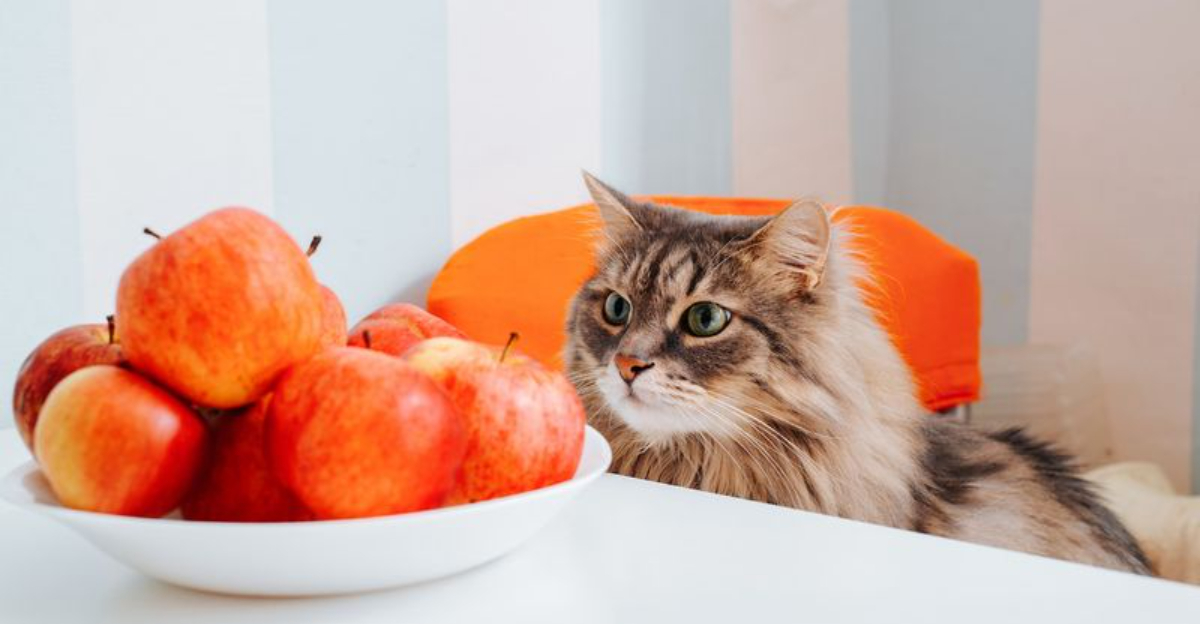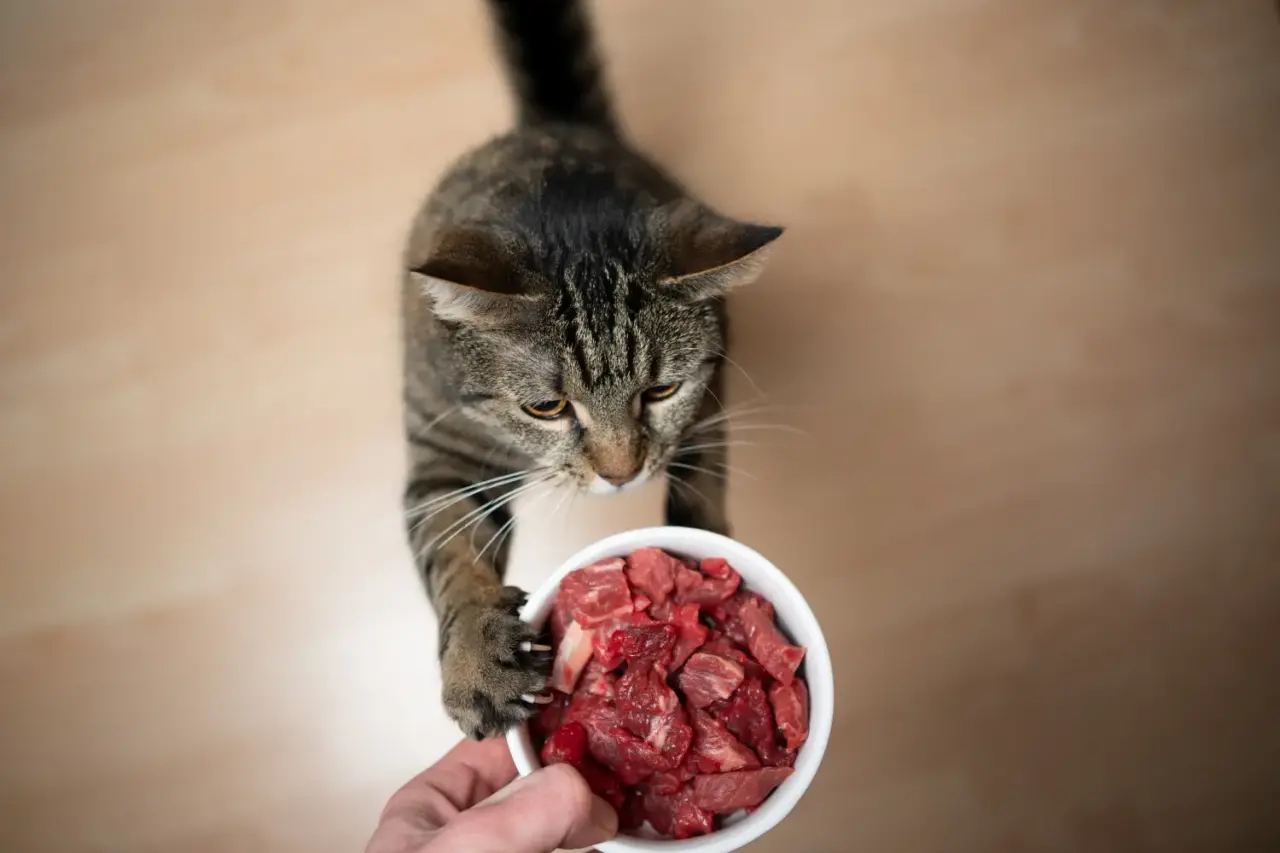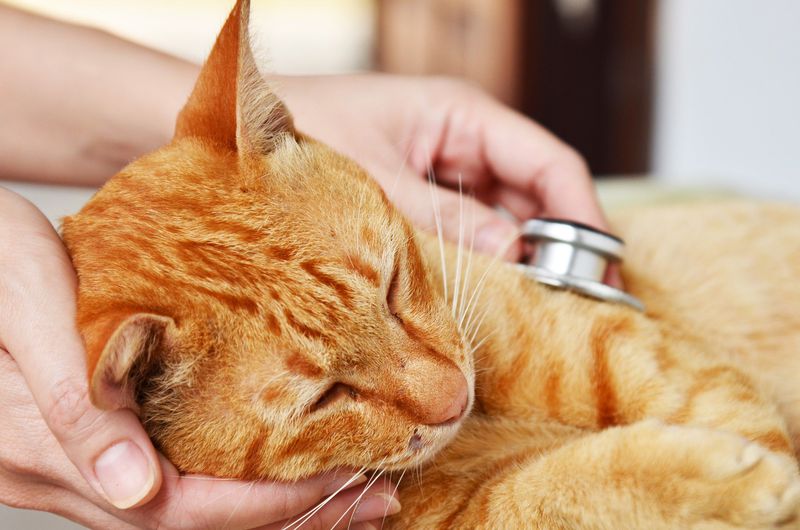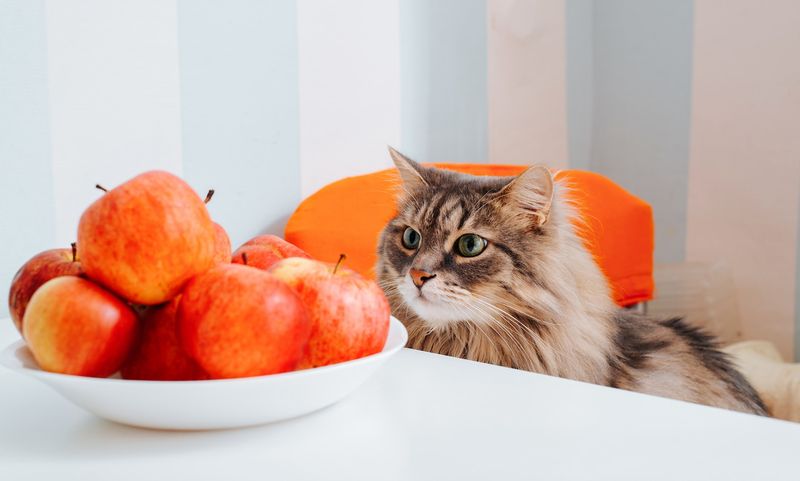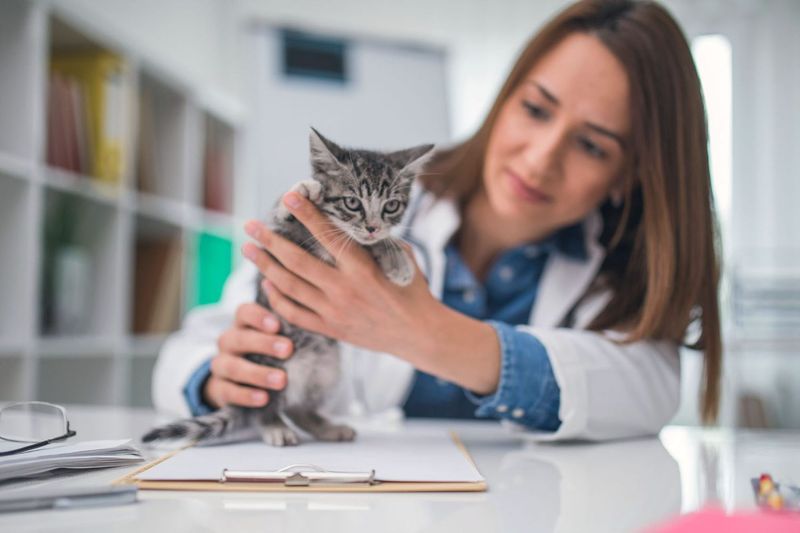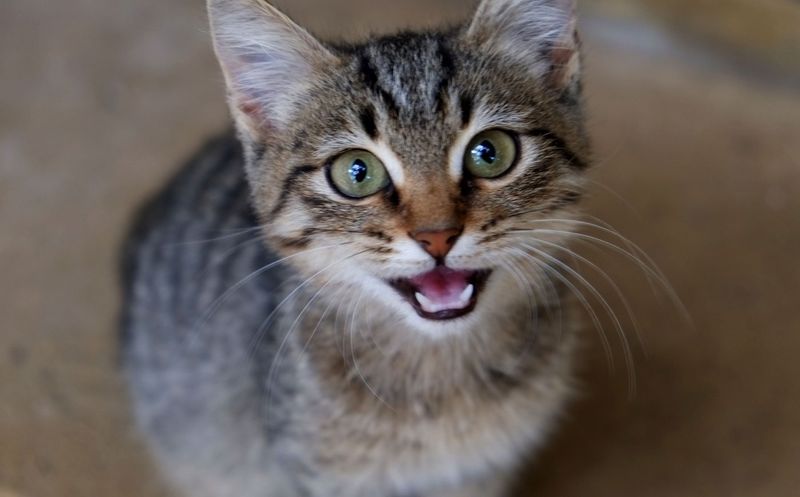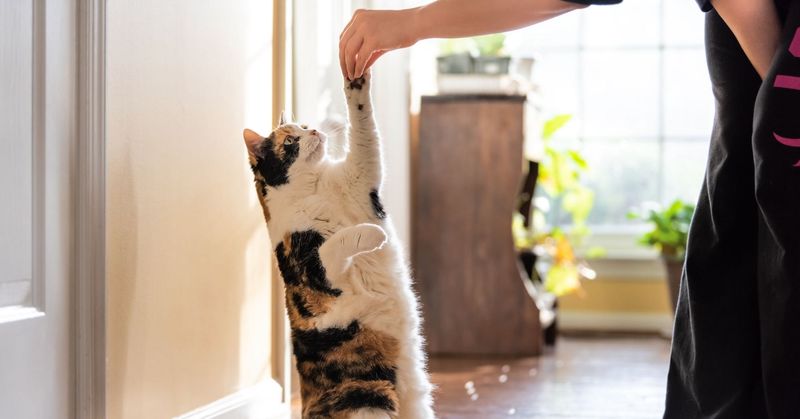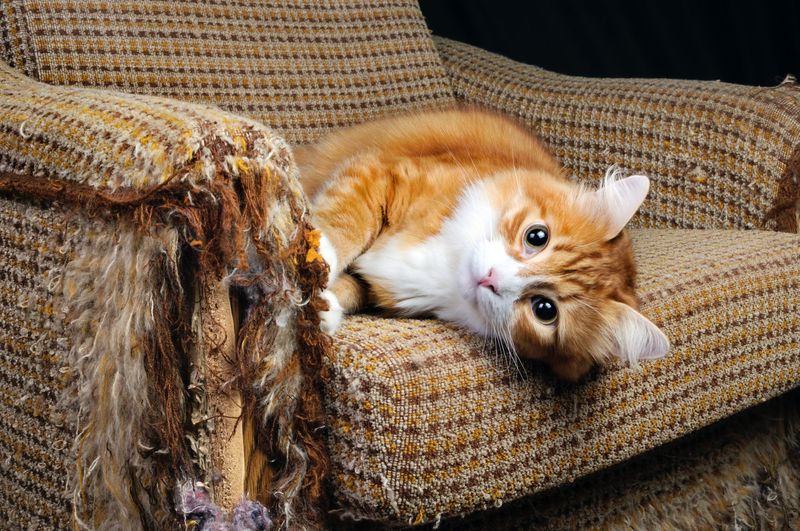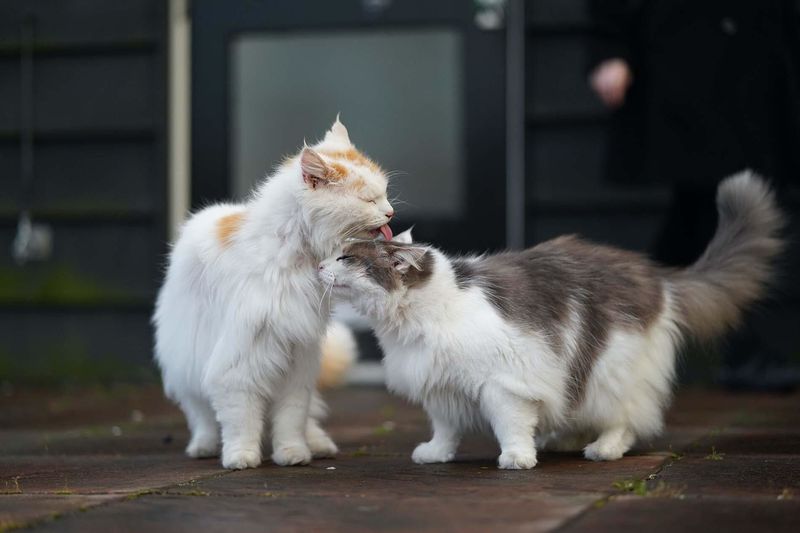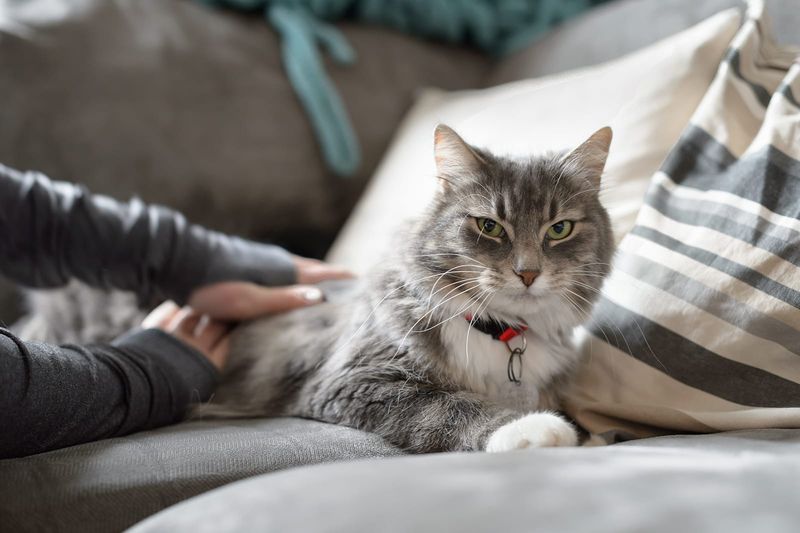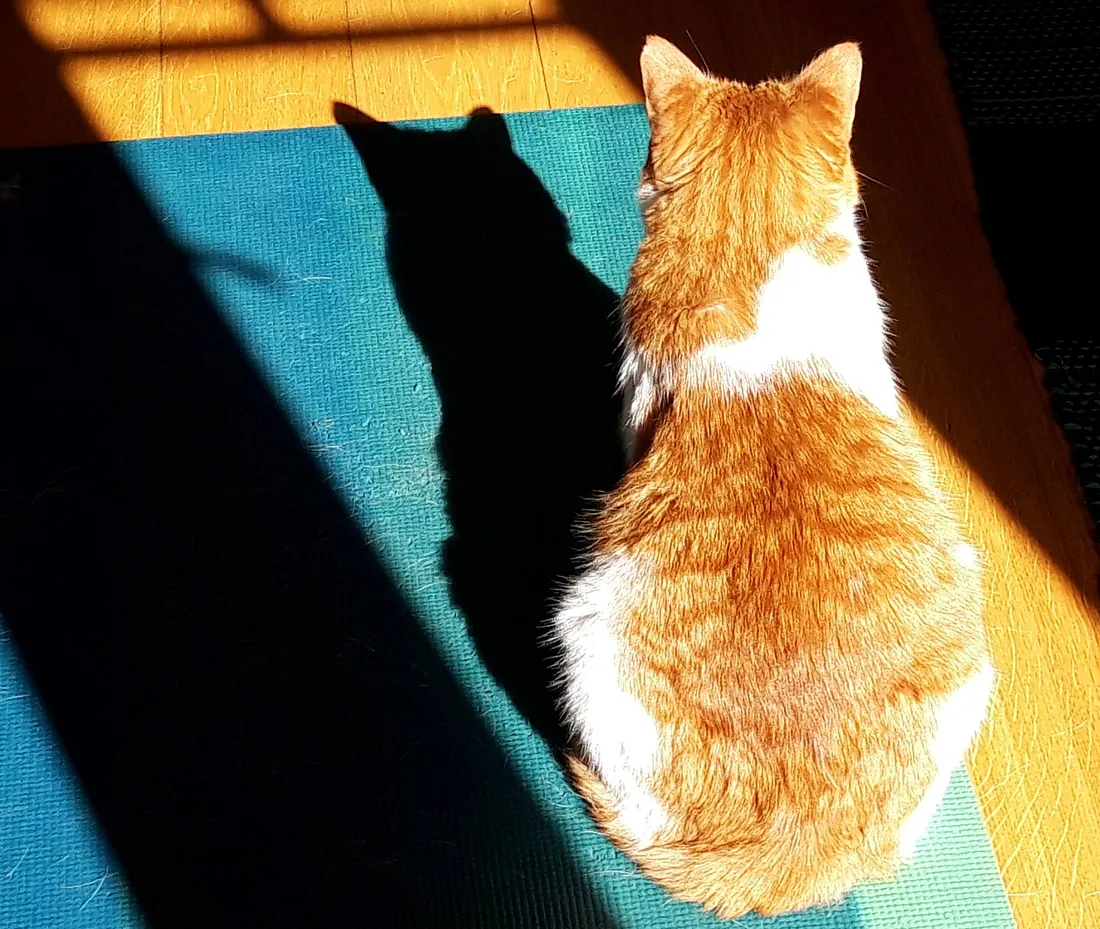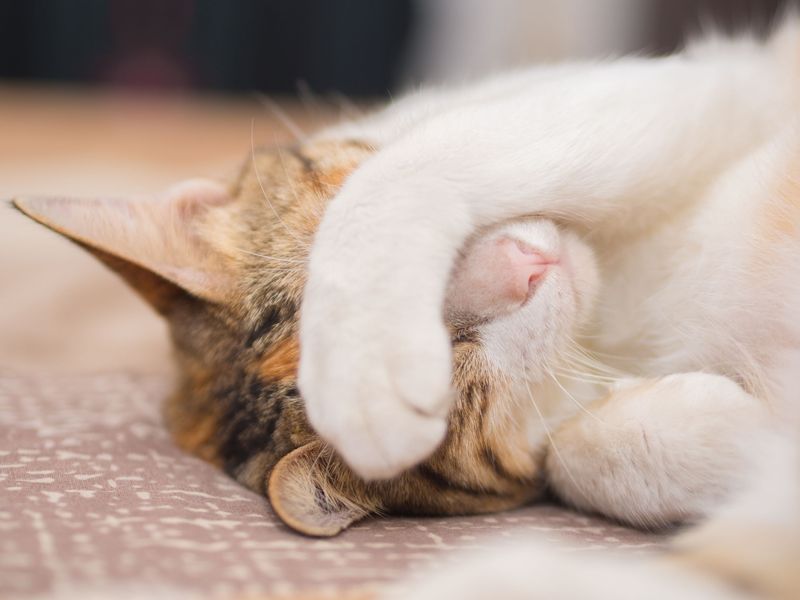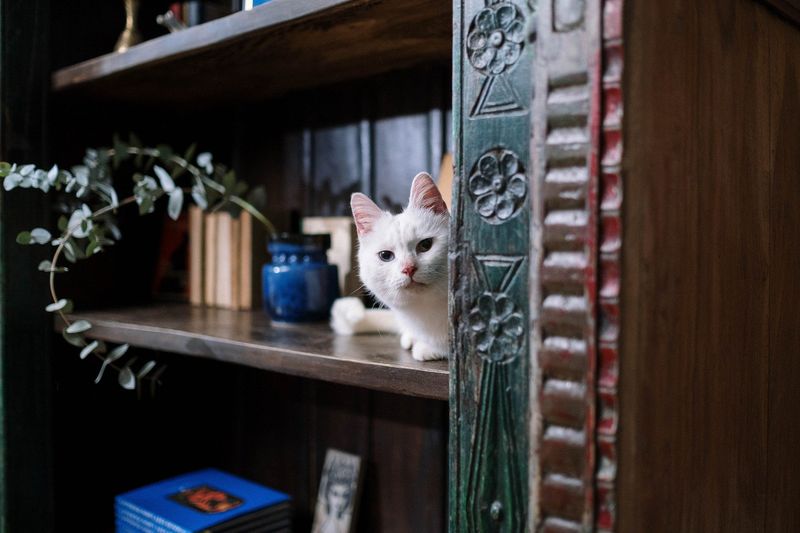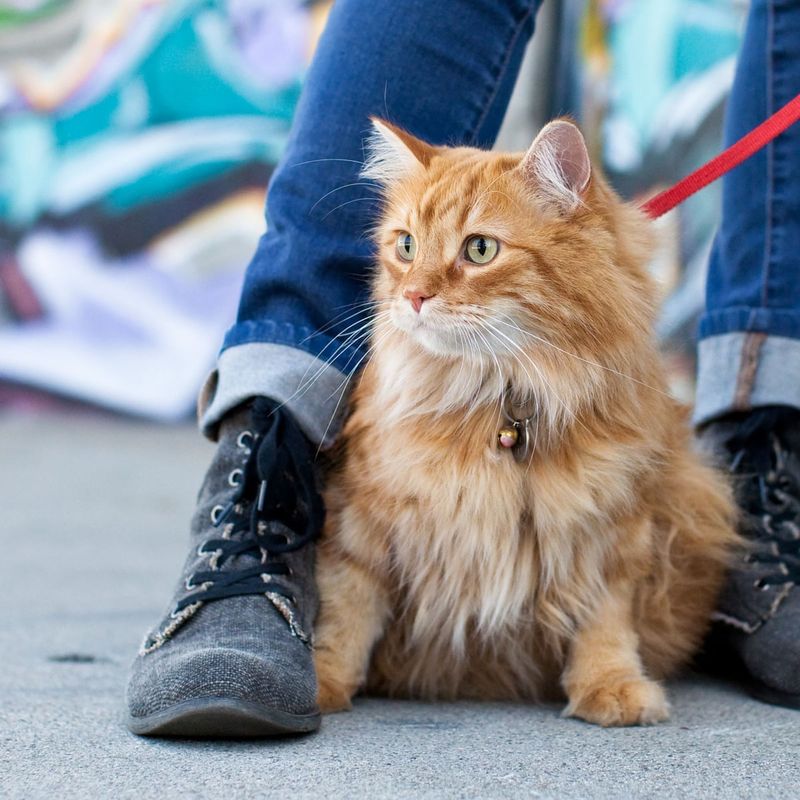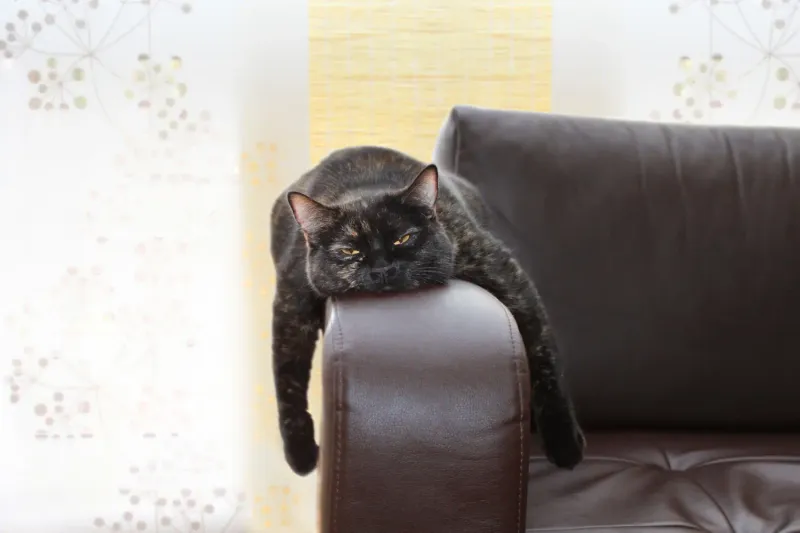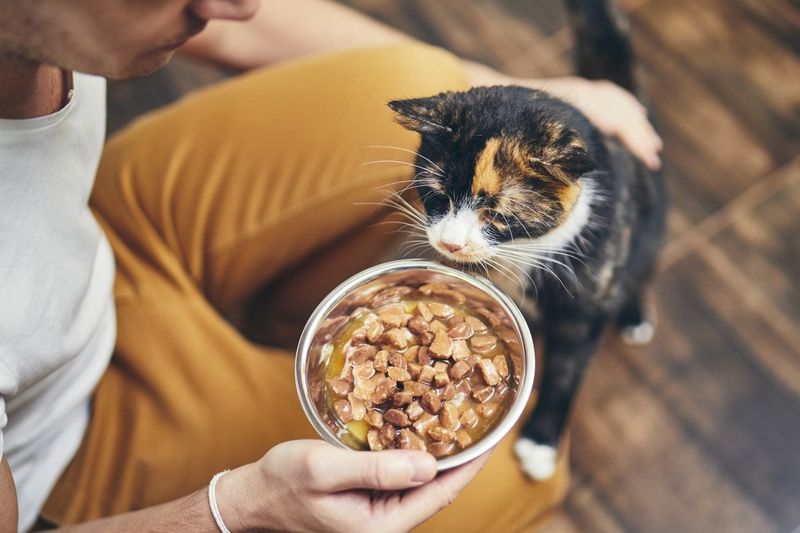📖 Table of Content:
- 1. What is the best diet for my cat—wet, dry, raw, or homemade?
- 2. How do I know if my cat is truly sick or just acting differently?
- 3. Is it ever okay to give my cat human food, and if so, what’s safe?
- 4. How often should I take my indoor cat to the vet if they seem healthy?
- 5. Does my senior cat need a special diet, or should I keep feeding them the same food?
- 6. Why does my cat meow so much, and how can I get them to stop?
- 7. Can I train my cat like a dog, or are they too independent?
- 8. Why does my cat suddenly stop using the litter box, even though nothing has changed?
- 9. Should I let my cat roam outside, or is keeping them indoors better for their happiness?
- 10. How can I get my cat to stop scratching the furniture without declawing?
- 11. Does my cat need another cat for company, or are they happier alone?
- 12. How do I introduce a new pet into my home without stressing out my cat?
- 13. Why does my cat sometimes ignore me but other times demand attention?
- 14. Is it possible to teach my cat to enjoy being held, or is that just their personality?
- 15. How can I help my shy or anxious cat feel more comfortable around people?
- 16. How much space does my cat actually need to be happy in an apartment?
- 17. Should I leash-train my cat, or is it unnatural for them?
- 18. What’s the best way to keep my cat entertained while I’m at work all day?
- 19. Do cats get bored, and if so, how can I tell?
- 20. Is it okay to leave my cat alone for a weekend with enough food and water?
Felines are captivating companions, known for their independent yet affectionate nature. However, cat care is not always straightforward, and many owners find themselves facing dilemmas that don’t have clear-cut solutions. From dietary choices to behavioral quirks, understanding what’s best for your cat can be a challenge that requires patience and careful observation.
Some of the most puzzling questions revolve around a cat’s health, socialization, and daily routines. Should you feed them wet food, dry food, or a combination of both? Is your cat lonely and in need of a companion, or do they prefer their solitude? These uncertainties can leave even experienced cat owners second-guessing their decisions.
In this blog post, we’ll dive into 20 thought-provoking cat care questions that don’t have simple answers. Whether it’s figuring out why your cat suddenly stops using the litter box or determining how much space they truly need to be happy, we’ll provide insights to help guide your decision-making. While there may not always be one definitive answer, understanding these complexities will help you create a better, more enriching life for your feline friend.
1. What is the best diet for my cat—wet, dry, raw, or homemade?
Choosing the best diet for your cat involves considering their health, age, and preferences. Wet food offers hydration, while dry food is convenient and can aid dental care. Raw diets are natural but risky if not prepared properly. Homemade meals provide control over ingredients but require nutritional knowledge. Consulting with a veterinarian helps tailor the right diet, ensuring all nutritional needs are met. Cats’ dietary needs change as they age, so regular reassessment is essential. Every cat is unique, and what works for one may not suit another. Experimenting with different diets can help find the perfect balance.
2. How do I know if my cat is truly sick or just acting differently?
Cats are masters at hiding illness, making it challenging to distinguish between sickness and mood changes. Subtle signs like decreased appetite, lethargy, or changes in litter box habits can signal underlying health issues. Monitoring your cat’s behavior over time is key. If unusual behavior persists, consulting a veterinarian ensures any potential problems are diagnosed early. Trusting your instincts and knowing your cat’s normal behavior is vital. Keeping a health diary may also help track changes and provide valuable information to your vet. Understanding your cat’s body language enhances your ability to detect potential problems early.
3. Is it ever okay to give my cat human food, and if so, what’s safe?
Feeding your cat human food can be tempting but requires caution. Some foods are safe in moderation, like cooked chicken or carrots. However, many human foods are toxic to cats, including chocolate, onions, and garlic. Understanding which foods are safe helps prevent accidental poisoning. Offering small amounts of safe human food as a treat can be rewarding but should not replace a balanced cat diet. Consulting with your vet ensures you’re providing healthy options. Treat human food as an occasional indulgence, not a regular part of your cat’s diet. Education ensures safe sharing without harm. Make sure to do your research.
4. How often should I take my indoor cat to the vet if they seem healthy?
Regular veterinary check-ups are essential, even for seemingly healthy indoor cats. Annual visits help monitor health, update vaccinations, and catch potential issues early. Indoor cats may face fewer risks but can still develop health problems over time. Veterinarians assess overall health through physical exams and routine tests. Senior cats may require more frequent visits to address age-related concerns. Building a relationship with your vet ensures they understand your cat’s health history. Staying proactive with veterinary care contributes to long-term well-being. Regular check-ups provide peace of mind, knowing your cat is healthy and thriving.
5. Does my senior cat need a special diet, or should I keep feeding them the same food?
Senior cats often benefit from diets tailored to their changing nutritional needs. Aging can affect metabolism, joint health, and dental issues, necessitating dietary adjustments. Specialized senior cat foods offer nutrients supporting these changes. Consulting with a veterinarian ensures your senior cat’s diet addresses specific health concerns. Gradually transitioning to a new diet helps avoid digestive upset. Regular monitoring of weight and health keeps dietary plans aligned with your cat’s needs. Feeding your senior cat a suitable diet enhances their quality of life, ensuring they enjoy their golden years with vitality and comfort.
6. Why does my cat meow so much, and how can I get them to stop?
Excessive meowing can be a sign of attention-seeking, hunger, or underlying health issues. Understanding the context of your cat’s vocalizations helps address the cause. Some breeds are naturally more vocal, while changes in routine may trigger meowing. Providing mental stimulation, toys, or interactive play reduces boredom-induced meowing. If attention-seeking is the cause, rewarding quiet behavior encourages calmness. Persistent meowing may warrant a veterinary check-up to rule out health problems. Patience and observation are key to addressing excessive meowing. Understanding your cat’s communication style strengthens your bond and promotes harmony.
7. Can I train my cat like a dog, or are they too independent?
Unlike dogs, cats respond best to positive reinforcement, using treats or praise to encourage desired behavior. Training enhances mental stimulation and strengthens the human-cat bond. Starting with simple commands like ‘sit’ or ‘come’ builds confidence. Short, consistent training sessions keep your cat engaged without overwhelming them. Every cat is different, so adapting your approach to suit their personality fosters success. Training fosters communication and trust, proving cats can learn and enjoy the process if approached with patience and creativity.
8. Why does my cat suddenly stop using the litter box, even though nothing has changed?
Litter box issues often indicate stress, health problems, or displeasure with the box itself. Even minor changes, like a new litter type or location, can upset your cat’s routine. Medical issues like urinary infections may also be responsible. Observing behavior and environment helps identify potential triggers. Ensuring a clean, accessible litter box with preferred litter type enhances comfort. If problems persist, a veterinary check-up rules out medical conditions. Patience and understanding resolve litter box dilemmas. Creating a cat-friendly environment supports their natural instincts, ensuring their comfort and well-being.
9. Should I let my cat roam outside, or is keeping them indoors better for their happiness?
The decision to let your cat roam outdoors depends on factors like safety, environment, and personality. Outdoor access provides stimulation, but risks like traffic and predators must be considered. Indoor cats enjoy safety, but boredom may arise without enrichment. Creating a stimulating indoor environment with toys and climbing spaces reduces the need for outdoor exploration. Supervising outdoor time or using a catio offers a compromise, balancing freedom with safety. Understanding your cat’s needs and preferences guides this decision.
10. How can I get my cat to stop scratching the furniture without declawing?
Scratching is a natural cat behavior, essential for marking territory and maintaining claw health. Providing alternative scratching surfaces like posts or mats satisfies this instinct. Placing them near furniture redirects attention. Using deterrents like double-sided tape on furniture discourages unwanted scratching. Consistent positive reinforcement when using approved surfaces reinforces good habits. Regular nail trimming reduces furniture damage. Commitment to understanding and meeting your cat’s needs prevents destructive scratching. Creating an environment where scratching is encouraged in appropriate places promotes harmony without resorting to declawing.
11. Does my cat need another cat for company, or are they happier alone?
Some cats thrive on companionship, while others enjoy solitude. Introducing another cat requires careful consideration of your cat’s personality and environment. Observing interactions with other animals helps gauge your cat’s social needs. Gradual introductions and providing personal space prevent stress and territorial disputes. Monitoring behavior ensures both cats are comfortable. Understanding your cat’s social dynamics fosters a harmonious multi-cat household. Ensuring individual needs are met contributes to a peaceful and fulfilling environment, regardless of whether your cat prefers companionship or solitude.
12. How do I introduce a new pet into my home without stressing out my cat?
A new pet requires patience and planning to minimize stress for your resident cat. Gradual introductions, using barriers like baby gates, allow safe exploration without direct contact. Providing separate spaces and resources avoids territorial disputes. Positive reinforcement, like treats and play, encourages acceptance. Observing body language helps gauge comfort levels. Success lies in taking introductions at your cat’s pace, respecting their comfort and boundaries. Fostering a peaceful coexistence ensures both pets thrive, building a harmonious household.
13. Why does my cat sometimes ignore me but other times demand attention?
This behavior is influenced by mood, environment, and personality. There is no one ultimate answer. Respecting these dynamics fosters a healthy relationship. Offering attention when sought and allowing space when needed ensures your cat feels secure. Observing cues and preferences helps tailor interactions, strengthening the bond. Embracing your cat’s unique personality and rhythms enhances companionship. Understanding and respecting their needs promotes a balanced and fulfilling relationship, celebrating both independence and closeness.
14. Is it possible to teach my cat to enjoy being held, or is that just their personality?
Gentle, positive interactions build trust and comfort over time. Every cat has unique boundaries and preferences. Starting with short, positive sessions, using treats and soothing tones, encourages acceptance. Observing body language helps respect comfort levels and adjust accordingly. Transforming a reluctant cat into a cuddle buddy requires patience and respect for their individuality. Embracing their unique nature fosters trust and affection, allowing them to enjoy interactions on their terms.
15. How can I help my shy or anxious cat feel more comfortable around people?
Shy cats benefit from a calm and consistent environment. Providing hiding spots and gradually exposing them to new experiences builds confidence. Positive reinforcement, like treats and gentle play, fosters trust. Respecting boundaries and allowing your cat to approach people at their own pace reduces stress. Consistent routines and familiar scents enhance comfort. Creating a supportive environment helps shy cats flourish. Patience and understanding are key to building confidence, allowing them to thrive socially in a safe and nurturing space.
16. How much space does my cat actually need to be happy in an apartment?
An apartment can be a fulfilling home with vertical spaces, cozy nooks, and engaging toys. Maximizing vertical space with shelves or cat trees satisfies their climbing instincts. Providing windows for bird-watching and interactive play enriches their environment. Understanding your cat’s needs transforms any space into a happy home. Prioritizing both physical and mental stimulation ensures contentment, regardless of living in a small apartment or a spacious house.
17. Should I leash-train my cat, or is it unnatural for them?
Leash training offers a safe way for cats to explore the outdoors. While not all cats enjoy it, many adapt with patience and positive reinforcement. Starting with a comfortable harness and short sessions builds confidence. Observing your cat’s reaction guides the pace. Gradually increasing time and exposure ensures comfort and safety. Some cats may never adapt, and respecting their preference is essential. Leash training provides enrichment and exercise, enhancing your cat’s quality of life. Embracing their individuality ensures a positive experience, whether they explore on a leash or prefer indoor adventures.
18. What’s the best way to keep my cat entertained while I’m at work all day?
Keeping a cat entertained during long absences requires creative solutions. Interactive toys, puzzle feeders, and scheduled playtimes provide mental stimulation and prevent boredom. Setting up a window perch for bird-watching or rotating toys keeps their environment engaging. Technology, like pet cameras with treat dispensers, allows remote interaction. Ensuring your cat is entertained promotes happiness and reduces stress. Providing a variety of activities and enrichment ensures they thrive, even when home alone. Understanding and meeting their needs fosters a balanced and joyful lifestyle.
19. Do cats get bored, and if so, how can I tell?
Cats can experience boredom, manifesting as lethargy, excessive grooming, or destructive behavior. Recognizing these signs helps address their needs and enhance their environment. Providing mental stimulation through toys and interactive play prevents boredom. Observing behavior and preferences guides activity choices, ensuring engagement. Understanding your cat helps tailor an enriching environment. Meeting their need for stimulation promotes well-being, reducing boredom and fostering a joyful life. A proactive approach ensures your cat thrives, remaining happy and content.
20. Is it okay to leave my cat alone for a weekend with enough food and water?
Leaving a cat alone for a whole weekend requires careful preparation. While some cats are independent, they need access to food, water, and a clean litter box. Automated feeders and water fountains help maintain consistency. Arranging for a trusted friend to check in provides reassurance and addresses any unexpected issues. Interactive toys and a comfortable environment reduce potential stress. Understanding your cat’s needs ensures they remain safe and content during short absences. Responsible planning fosters peace of mind, allowing you to leave knowing your cat is cared for.
